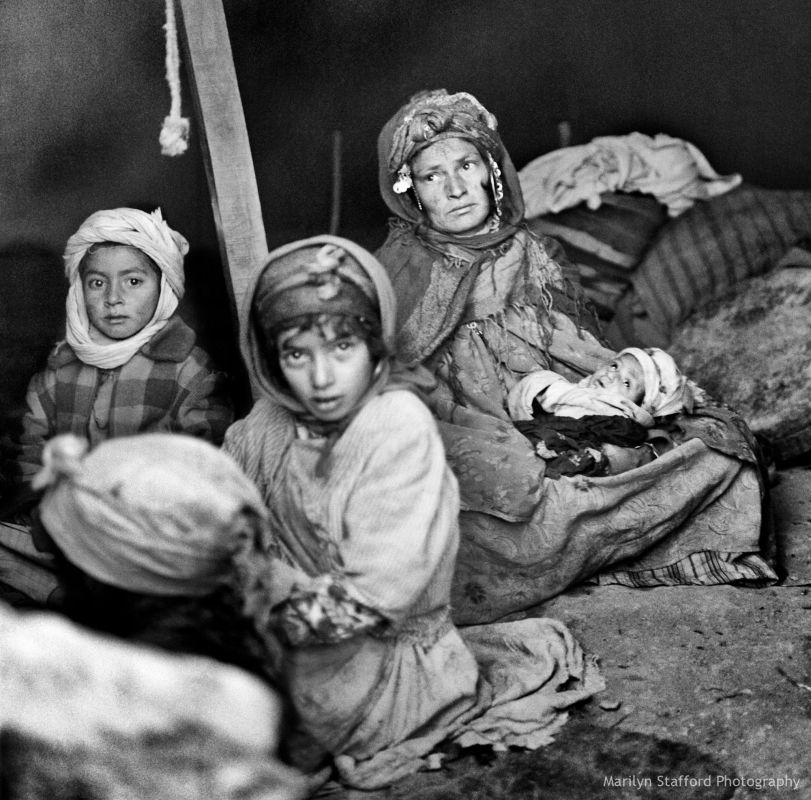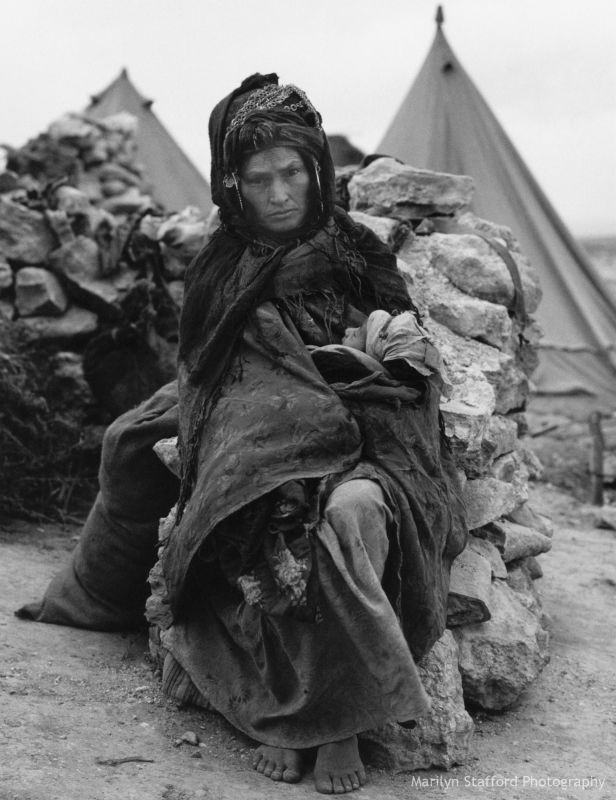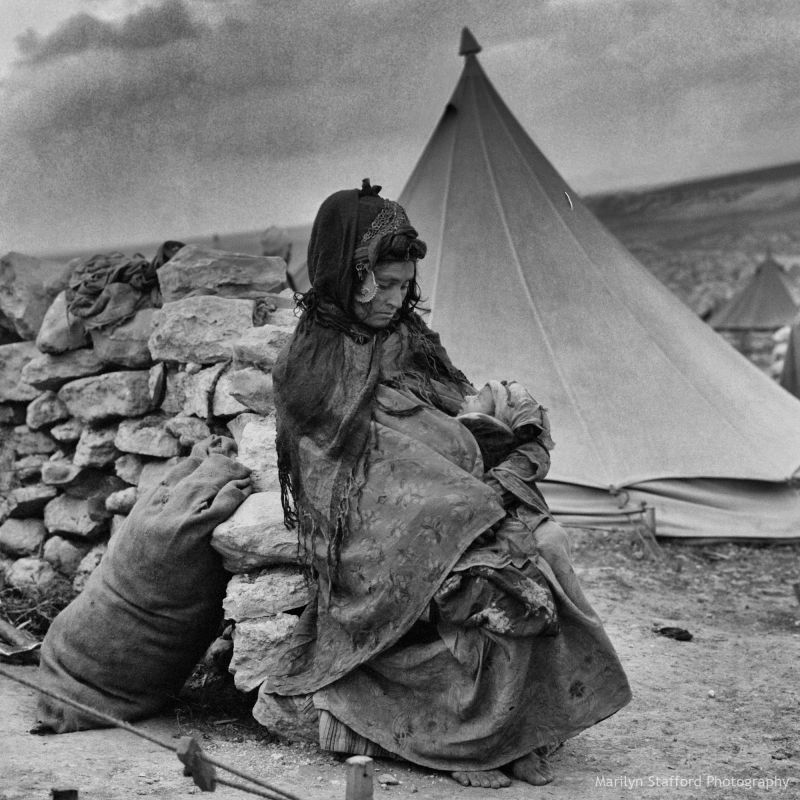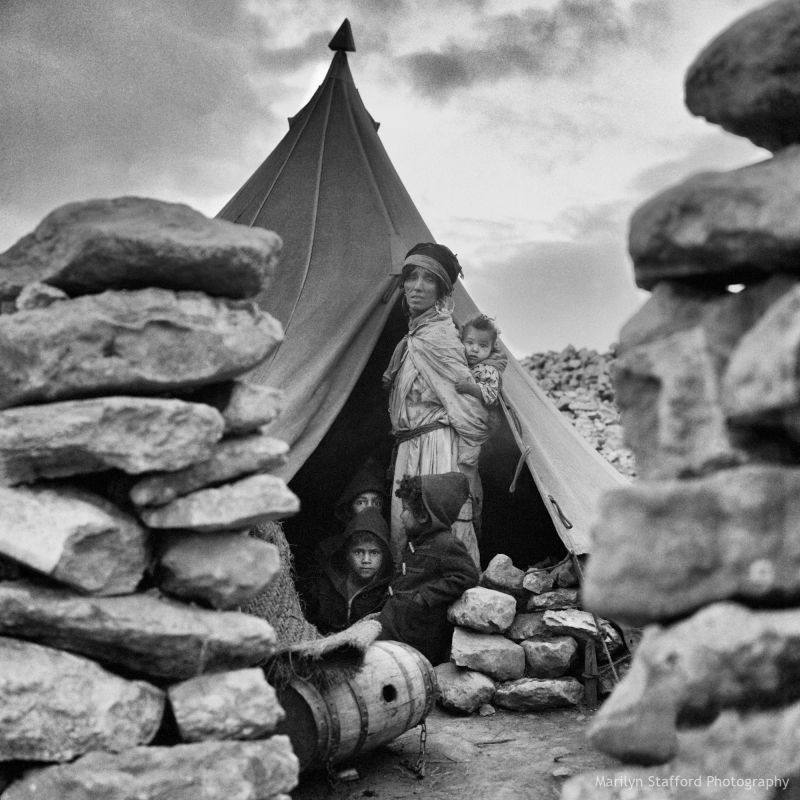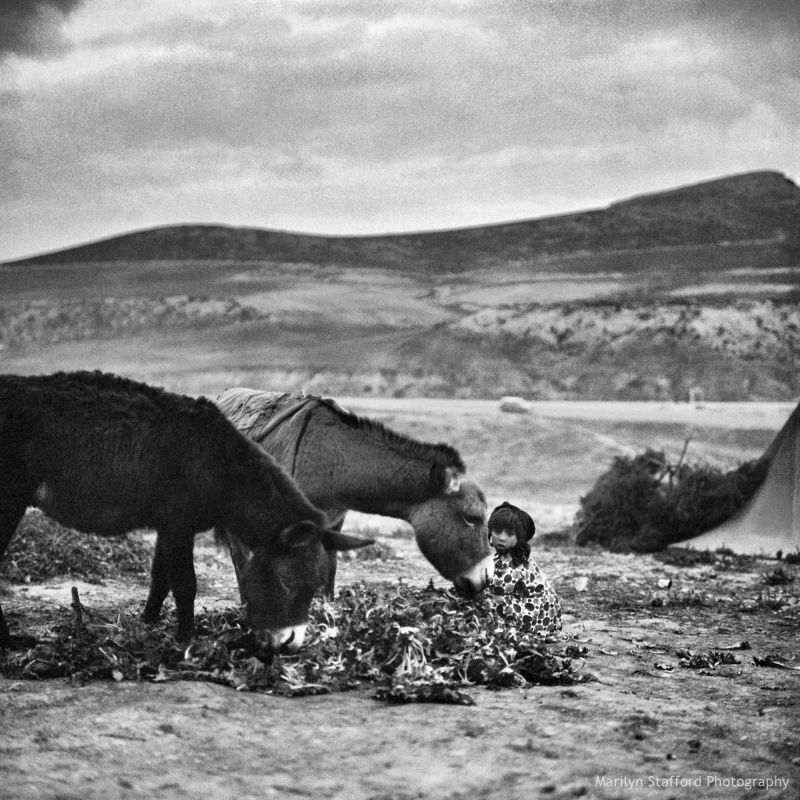Living in Paris in 1958, Stafford was acutely aware of the battle that was going on for Algerian independence against the French; one of the longest and bloodiest of anticolonial conflicts. The French instigated a ‘scorched earth’ policy, which led to many displaced Algerians fleeing over the border to Tunisia. Although she was five months pregnant at the time, Stafford felt compelled to photograph the Algerian refugees living in a refugee camp near to the bombed village of Sakiet. She was provided with a car and driver by the Algerian National Liberation Front. She photographed important scenes of displaced people, including a mother with her new-born baby, which felt especially poignant at the time of her own pregnancy. The photographs, selected by Henri Cartier-Bresson, were published on the front page of the Observer in London, on 30 March 1958. The Observer subsequently sent a journalist to Tunisia to cover the refugees, which helped to draw further attention to their plight.
ALGERIAN WAR OF INDEPENDENCE 1958
Living in Paris in 1958, Stafford was acutely aware of the battle that was going on for Algerian independence against the French; one of the longest and bloodiest of anticolonial conflicts. The French instigated a ‘scorched earth’ policy, which led to many displaced Algerians fleeing over the border to Tunisia. Although she was five months pregnant at the time, Stafford felt compelled to photograph the Algerian refugees living in a refugee camp near to the bombed village of Sakiet. She was provided with a car and driver by the Algerian National Liberation Front. She photographed important scenes of displaced people, including a mother with her new-born baby, which felt especially poignant at the time of her own pregnancy. The photographs, selected by Henri Cartier-Bresson, were published on the front page of the Observer in London, on 30 March 1958. The Observer subsequently sent a journalist to Tunisia to cover the refugees, which helped to draw further attention to their plight.
